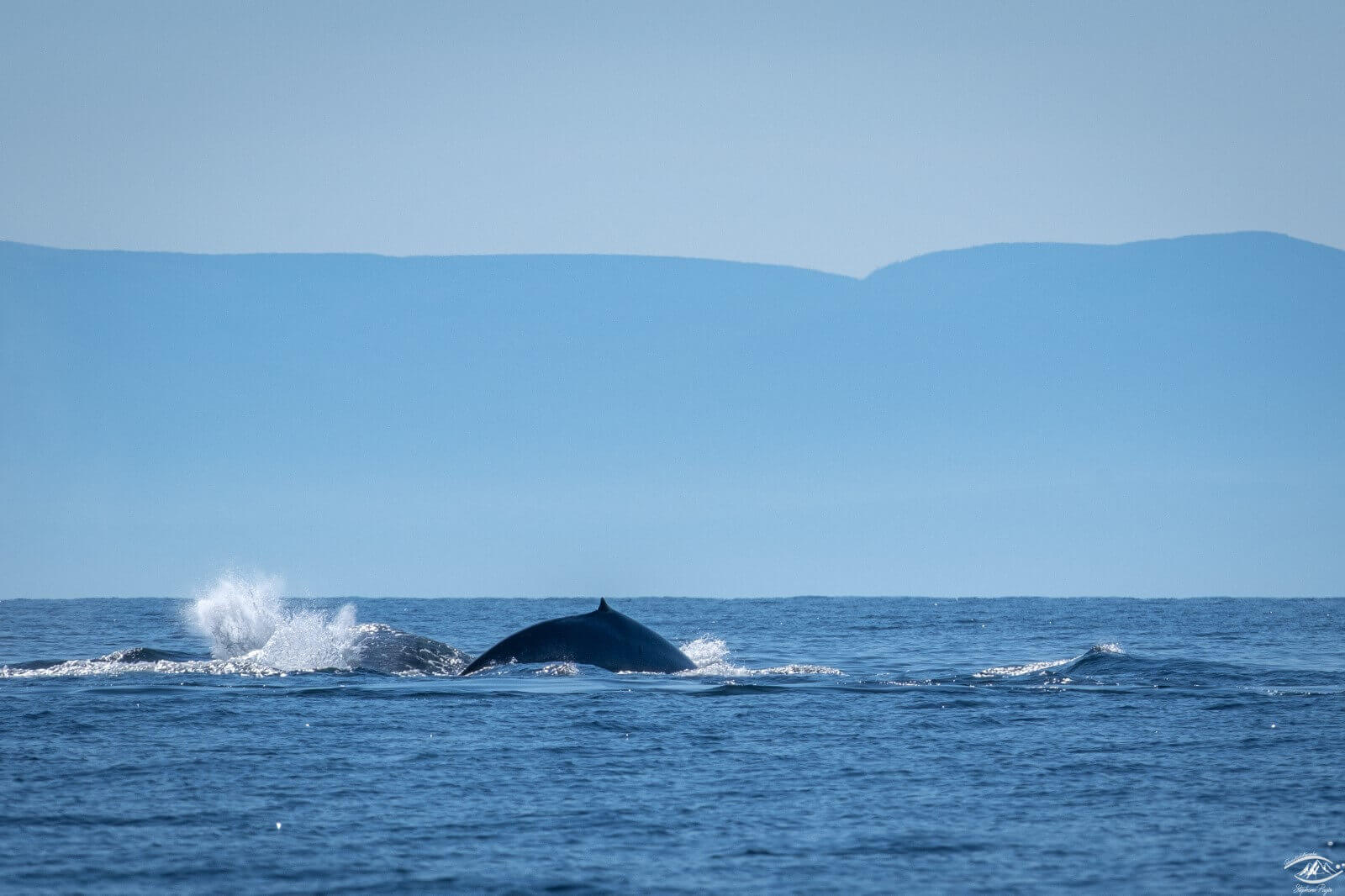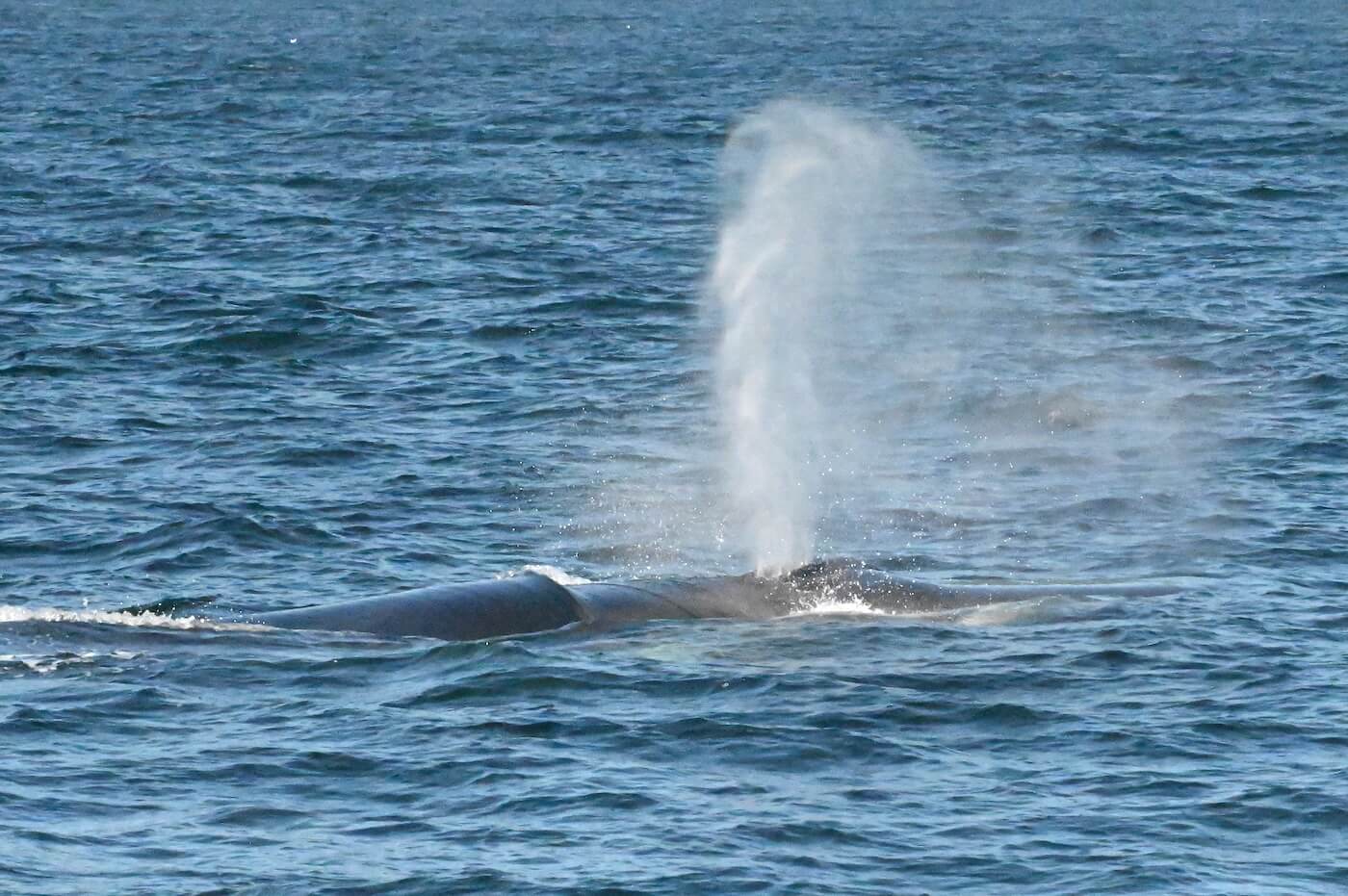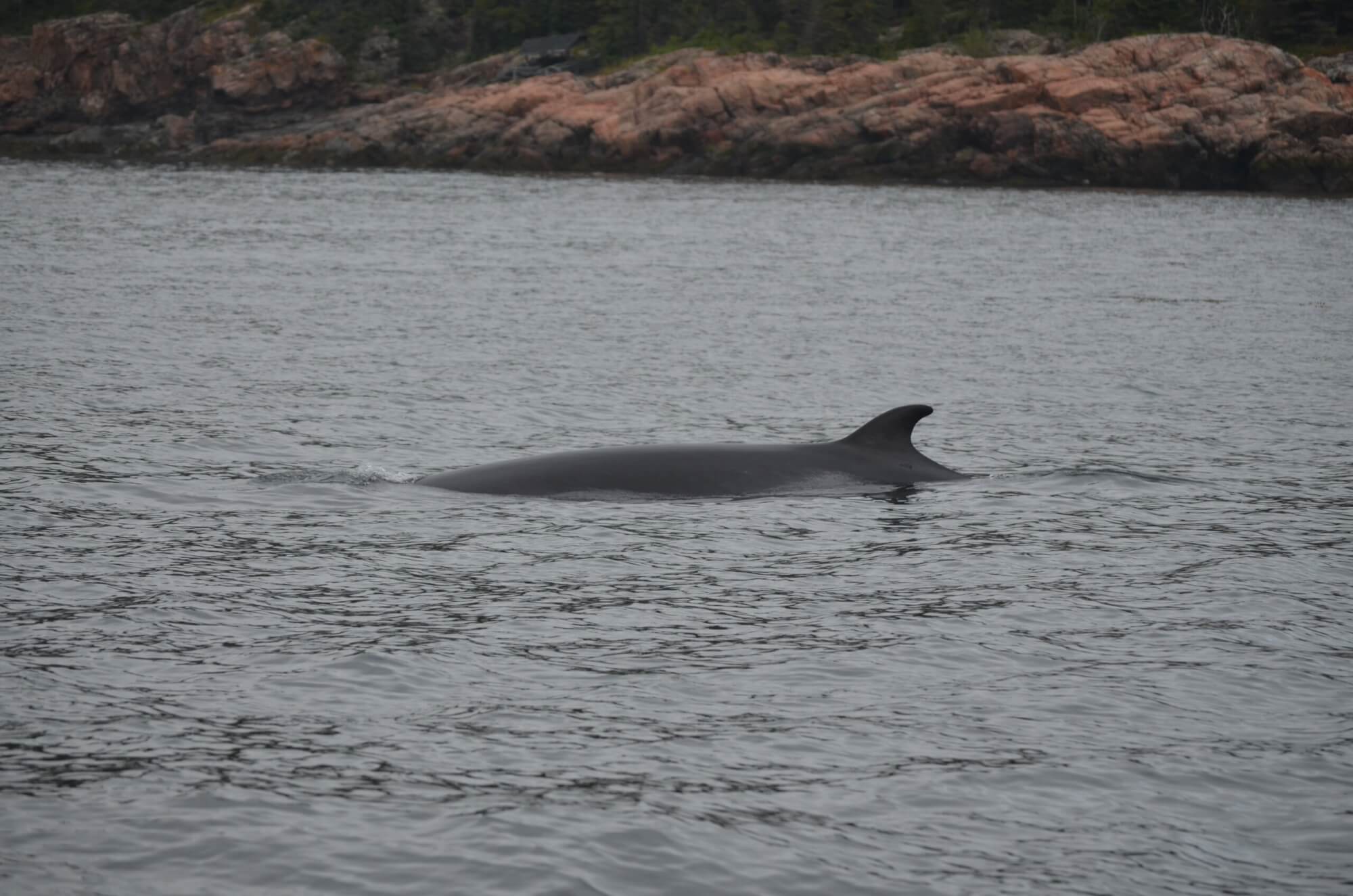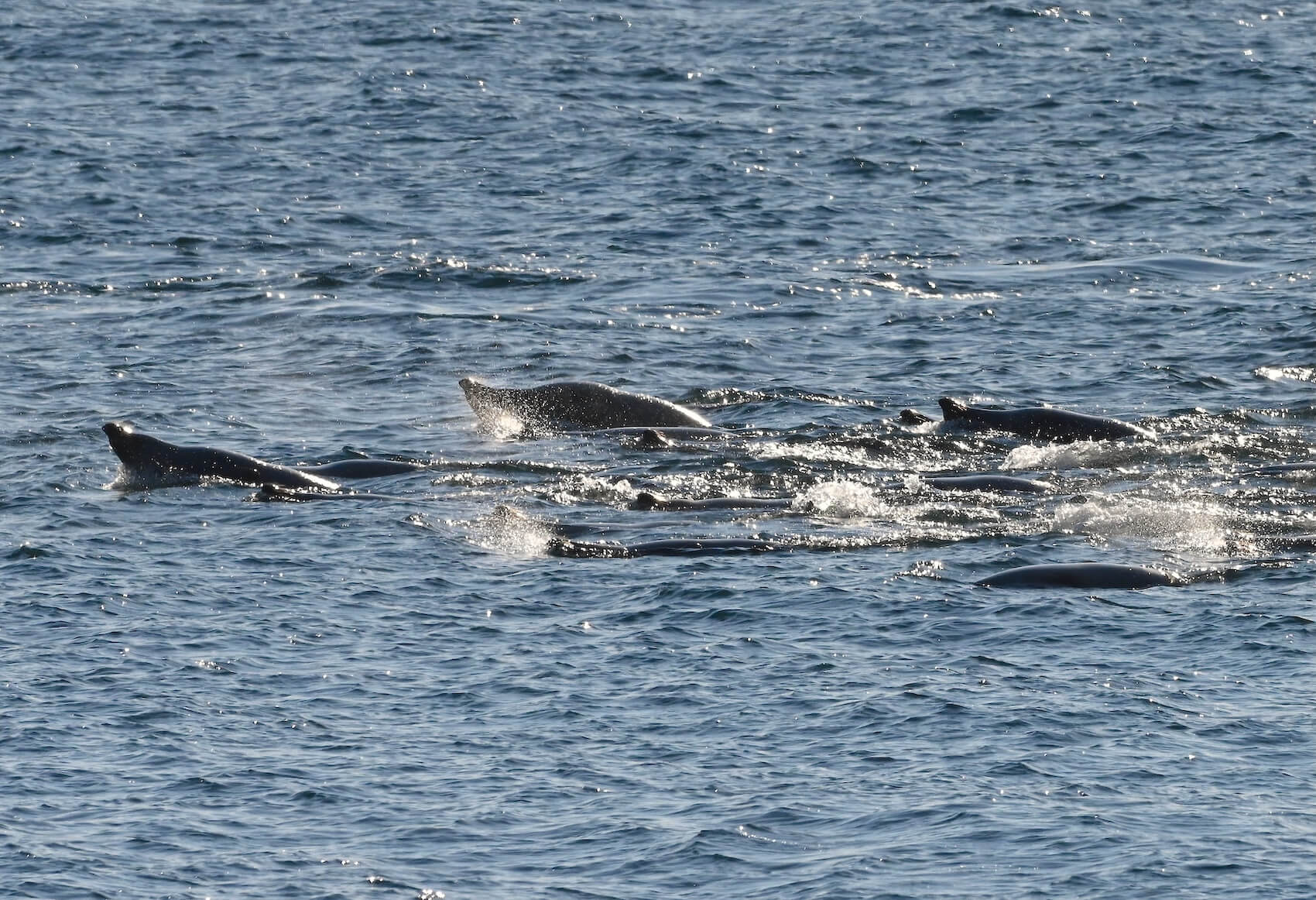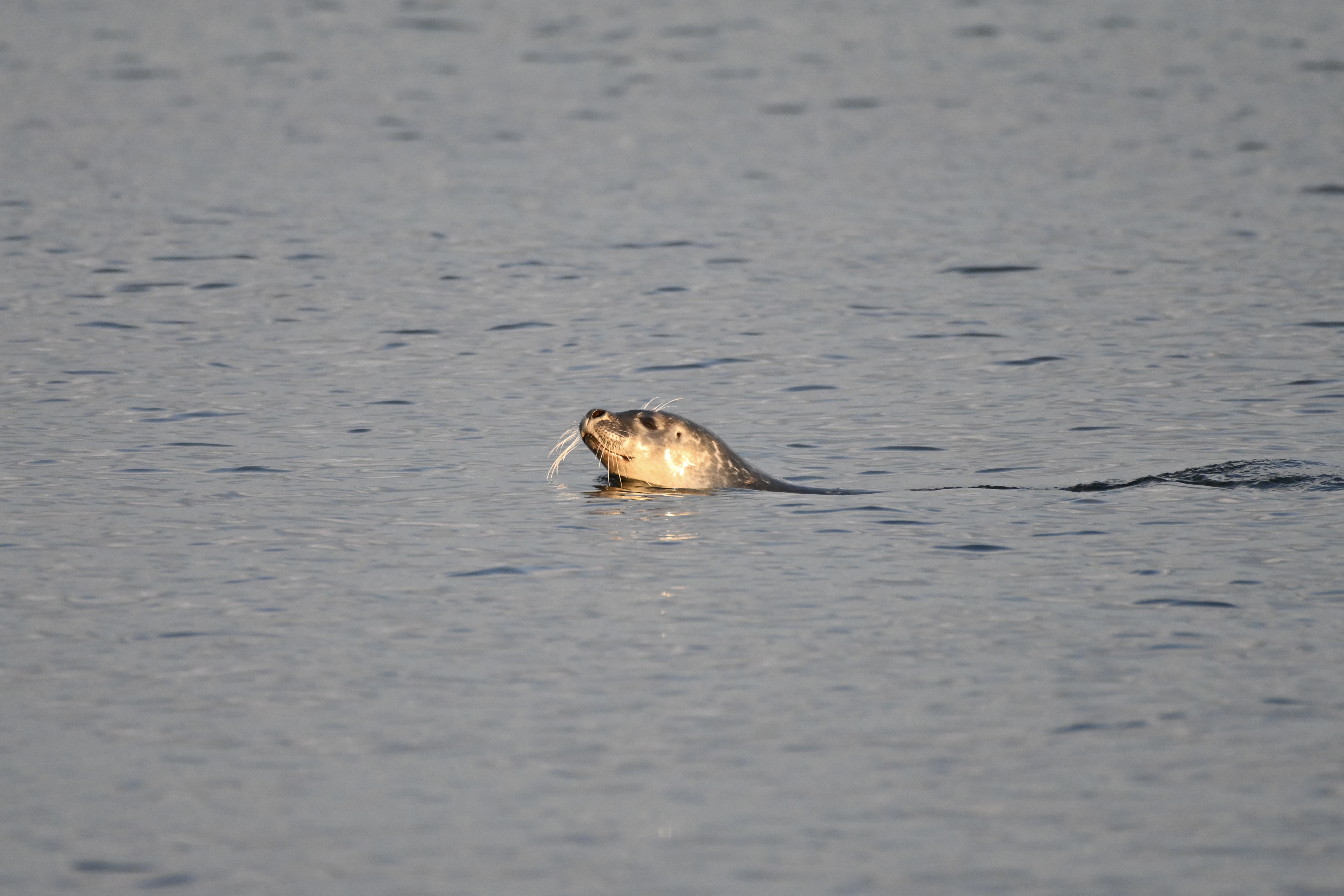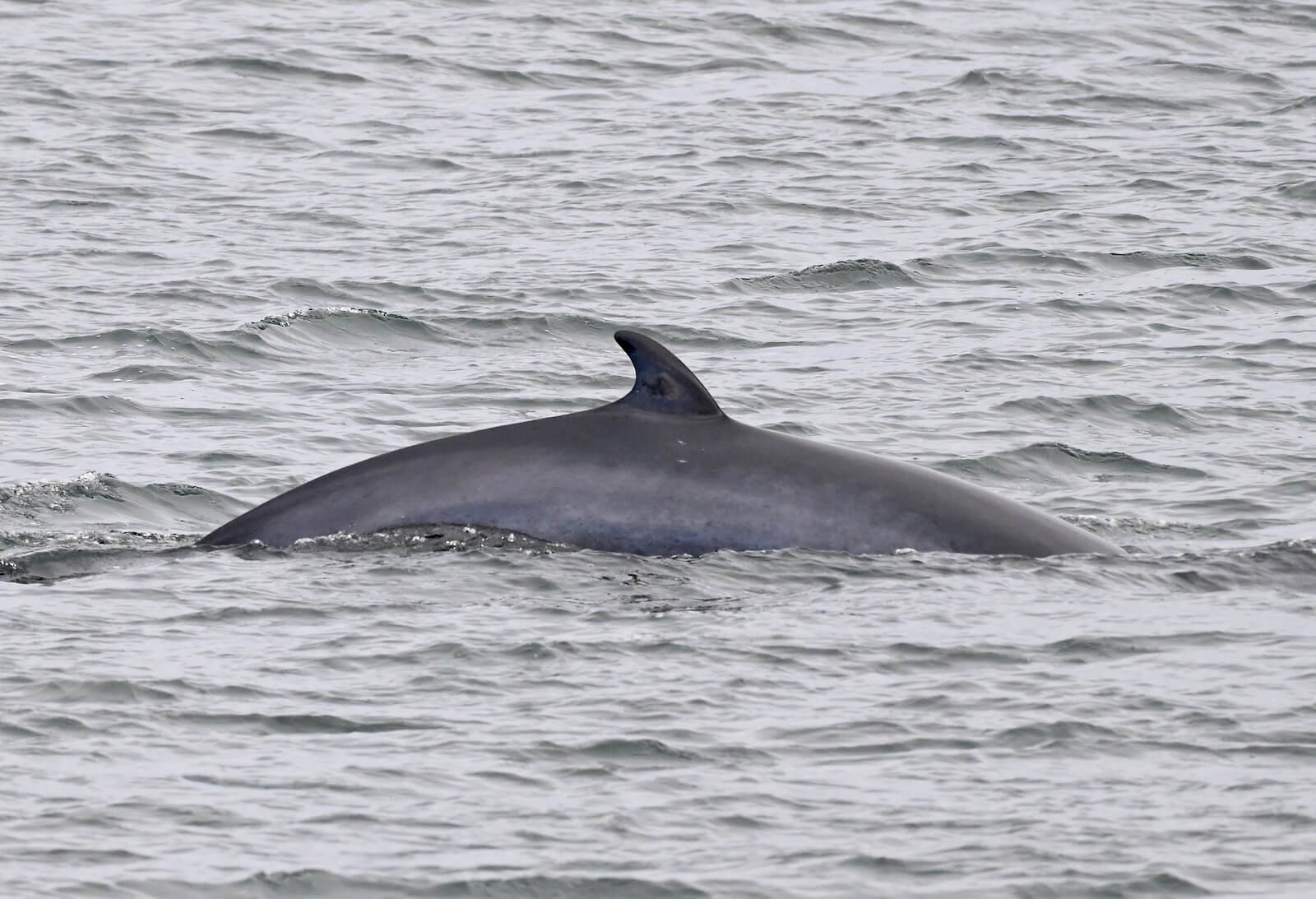This morning, as we arrived for the ferry to take us from Baie-Sainte-Catherine to Tadoussac, the dazzling white backs of a group of about ten belugas shimmered in the fjord. Today, I’m due to write about marine mammal sightings in the St. Lawrence, so we’re off to a good start! For this article, we’ve got our work cut out for us, from raising concerns about the recent presence of these precious belugas in the Gaspé region to describing blue whale behaviour, not to mention reporting on a multitude of other marine wildlife sightings!
Why are there belugas in the Gaspé Peninsula?
After encountering a herd of about one hundred belugas off Cap-des-Rosiers on July 9 and a group of about twenty individuals on July 30 near Cloridorme, a collaborator from the Mingan Island Cetacean Study (MICS) had another run-in with these white whales on August 26. “I encountered another large herd numbering at least 100 individuals off Anse à Valleau,” he describes, “and two days later, more off Cap-Des-Rosiers. Scattered over a patch of water measuring about three kilometres square, the herd was split into tight clusters of about ten individuals each.” He is not the only one to have observed these animals in the region; meanwhile, a number of individuals are puzzled by their presence. For GREMM Scientific Director Robert Michaud, this is the second summer for unusual beluga sightings in the region. “We’re used to seeing increasingly variable interannual distributions for large rorquals, but for belugas things are generally more stable.” The researcher is surprised to see belugas being observed in their winter range during the summer months. However, he notes that the phenomenon seems to coincide with more profound changes taking place in the St. Lawrence ecosystem. It’s also interesting to note that observers have been mainly reporting the presence of male belugas.
Blue whales in the rut
On September 1, a resident of Sept-Îles had the opportunity to witness the captivating behaviour of four giants of the sea. These blue whales appeared to be vying for the privilege to escort a female. A total of seven or eight other individuals were in the area, including one that showed its tail as it dived.
As autumn approaches, blue whale bulls compete to mate, sometimes racing one another for hours until one of the two contenders drops out of the contest. MICS researcher Richard Sears calls this behaviour a rumba. The winner then earns the right to escort the female, and the pair can sometimes be observed together for several days.
If case you are like most readers and have been wondering (our article on is one of the most popular on the site), you should know that each ejaculation produced by this giant contains about 20 litres of sperm, its penis measures up to 2.4 metres long, and its testicles weigh 45 to 68 kg. That’s as much as a harbour porpoise!
Ce n’est pas tout! Il y avait aussi deux rorquals communs, deux petits rorquals et des marsouins qui naviguent dans le coin.
“Explosion of sightings” in Blanc-Sablon
After a string of incredible sightings last week, as well as the presence of a North Atlantic right whale in early August, this week, a guide-interpreter for the MMON aboard the Bella Desgagnés shared a moment with us in the company of humpback whales and white-beaked dolphins.
Departing from Blanc-Sablon, the day began peacefully with the presence of harbour porpoises and puffins. “But after an hour, I saw a huge white splash in the distance (In hindsight, I think it was a breach.),” she describes. “Through my binoculars, I was easily able to make out spouts and dorsal fins: I was looking at my first group of humpbacks!” And that was just the beginning! Breathing, tail-slapping humpbacks were everywhere. “Amongst the baleen whales, we also saw splashing,” she adds. “Lots of splashing! It was white-beaked dolphins jumping out of the water! That was a first for me! They were leaping just for the fun of it, landing on their backs. In all, there must have been at least 50 of them.” The dolphins and humpbacks were not far away. She tried to count the large whales, but had to stop after about 30 because there were just too many! Within the herd, there even seemed to be two juveniles, which showed smaller tail fins.
Sightings galore
In the Gaspé Peninsula, a MICS collaborator tallied “a dozen or so minke whales, one fin whale, eight blues (actually probably over a dozen based on the number of large spouts observed in the area), as well as two humpbacks.” Porpoises and minke whales also appear to be present in numbers in the area, according to one naturalist.
From the wheel of her vehicle, one woman spotted a large spout near Tourelle, not far from Saint-Anne. She pulled onto the shoulder to observe it. However, it was impossible to confirm the species, as it was simply too far.
In the estuary, blue whales were reported near Portneuf-sur-Mer. One fin whale, two blues, and a few minke whales were also present. Near Essipit, one visitor was very lucky. “I saw a humpback whale perform two full breaches,” she said, obviously impressed. It was the single most amazing thing I had witnessed in my entire life.”
A herd of nearly 200 grey seals is still being seen near Franquelin, while three humpbacks and a few minke whales have also been swimming nearby. Lastly, on September 3, we were informed of the presence of a tuna leaping out of the water!
Where are the whales this week? Observation map
These data were reported by our network of observers. They give an idea of the presence of whales and in no way represent the actual distribution of whales in the St. Lawrence. Just for fun!
Click on the whale or seal icons to discover the species, the number of individuals, additional information or photos of the sighting. To enlarge the map, click on the icon in the top right-hand corner. The map works well on Chrome and Firefox, but not so well on Safari.
To display the list of sightings, click on the icon in the top left-hand corner.
Thanks to all our collaborators!
Special thanks go out to all our observers who share their love for marine mammals with us! Your encounters with cetaceans and pinnipeds are always a pleasure to read and discover.
On the water or from shore, it is your eyes that give life to this column.
Odélie Brouillette
Marie-Andrée Charlebois
Thalia Cohen Bacry
Laetitia Desbordes
Jade-Audrey Lavergne
Maelys Malhière
Yael Medav
Stéphane Pagès
Pascal Pitre
Renaud Pintiaux
Diane Ostiguy
René Roy
Andréanne Sylvain
Guy Synnott
Ophélie Turgeon
Marielle Vanasse
And to all the others!
Additionally, we would like to acknowledge the following teams that also share their sightings:
Sept-Îles Research and Education Centre (CERSI)
Group for Research and Education on Marine Mammals (GREMM)
Marine Mammal Observation Network (MMON)
Quebec Marine Mammal Emergency Response Network (QMMERN)
Mingan Island Cetacean Study (MICS)
Mériscope
Would you also like to share your observations?
Have you seen any marine mammals in the St. Lawrence? Whether it’s a spout offshore or just a couple of seals, drop us a line and send your photos to [email protected]!


